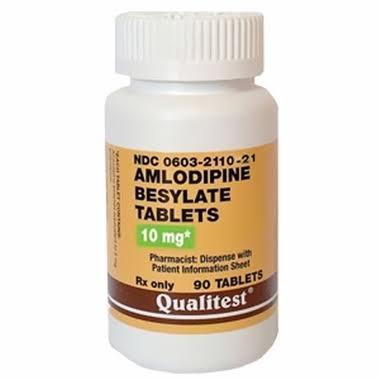Learn about Amlodipine Besylate for cats, a commonly prescribed medication for feline hypertension. Discover its uses, dosage, side effects, and why consulting a veterinarian is essential.
High blood pressure in cats, also known as feline hypertension, is a serious condition that can lead to kidney failure, heart disease, and vision loss if left untreated. One of the most commonly prescribed medications for managing this condition is Amlodipine Besylate for cats. This calcium channel blocker helps relax blood vessels, allowing for smoother blood flow and reducing strain on your cat’s heart and organs.
What Is Amlodipine Besylate?
Amlodipine Besylate is a long-acting calcium channel blocker primarily used to manage hypertension in both humans and animals. In cats, it works by dilating peripheral arteries, which lowers blood pressure and improves circulation. Veterinarians often prescribe this medication for cats diagnosed with primary hypertension or secondary hypertension caused by chronic kidney disease or hyperthyroidism.
When Is Amlodipine Prescribed for Cats?
Your veterinarian may recommend Amlodipine Besylate if your cat exhibits signs of high blood pressure such as:
- Sudden blindness or dilated pupils
- Seizures or disorientation
- Lethargy and weakness
- Behavioral changes
- Weight loss or increased thirst
In many cases, hypertension in cats is secondary to another health condition. Amlodipine helps control blood pressure, protecting vital organs while your vet addresses the underlying issue.
Proper Dosage and Administration
The typical dosage of Amlodipine Besylate for cats ranges between 0.625 mg to 1.25 mg per cat once daily. However, dosage depends on your cat’s weight, blood pressure readings, and response to the medication. Tablets are usually given orally, with or without food. It’s essential to follow your vet’s instructions carefully and avoid changing the dose or stopping treatment abruptly.
If your cat misses a dose, administer it as soon as possible unless it’s almost time for the next one. Do not double doses. Consistent administration is key to maintaining stable blood pressure levels.
Possible Side Effects
While generally well-tolerated, Amlodipine may cause mild side effects such as:
- Loss of appetite
- Lethargy
- Vomiting
- Gingival (gum) enlargement
- Low blood pressure in rare cases
If your cat shows any severe symptoms such as collapse, extreme weakness, or unsteady walking, contact your veterinarian immediately.
Monitoring and Long-Term Use
Cats on Amlodipine Besylate require regular blood pressure monitoring and periodic bloodwork to assess kidney and liver function. Your vet may adjust the dosage based on these results to ensure safe, effective control of hypertension.
Where to Learn More
For trusted information on feline medications and veterinary products, visit petworldgdl.com for reliable pet health resources and expert advice.
Conclusion
Amlodipine Besylate for cats is a vital medication for managing feline hypertension and preventing severe complications. Always consult your veterinarian before starting or adjusting any medication, and ensure regular monitoring for your cat’s safety and well-being. With the right treatment and care, cats with hypertension can lead long, healthy lives.





